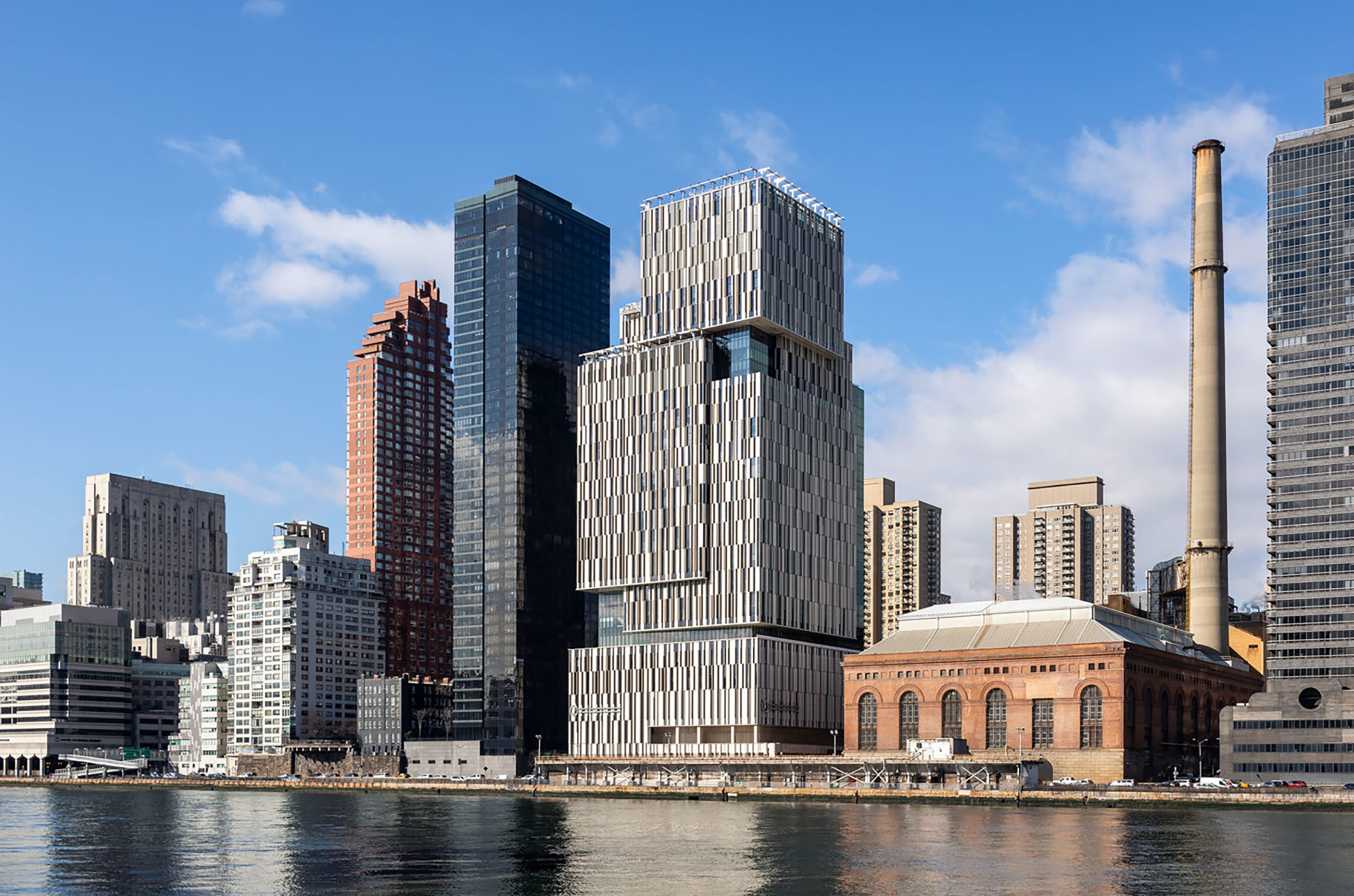


The new MSKCC David H. Koch Center for Cancer Care, a next generation facility focused on advances in outpatient cancer care, was designed for healing. The outpatient facility occupies 25 floors and offers 231 exam rooms, 110 infusion rooms, 37 procedure rooms, and 16 inpatient beds for those requiring a short stay. The architects set out to make this outpatient care and innovative research facility as open and filled with light as possible to bring the outside world in and enhance healing. The cantilevered modules separated by terraces sounds wonderful in theory. Now here’s the acoustic reality.
The Koch Pavilion is right off the FDR Drive, in one of the most densely packed areas of Manhattan, and with a glass curtain wall being the only thing between traffic sounds and people healing, it was imperative that Cerami recommend the glass with the right attenuation, and that it would take multiple iterative acoustic simulations to get the result just right. Because Cerami has designed dozens of healthcare facilities and hospitals around the world, next to just about every type of problem, we know how to achieve the best possible acoustic environment.
Signature Solution: Noise and vibration are major concerns for all healthcare facilities. The constant buzz from equipment, machines, alarms, and bustling activity in the hallway can cause severe harm to a patient’s physiological health. Even a minuscule unaccounted and unplanned for vibration can become a major liability in the case of imaging equipment and precise experiments.
Cerami’s solution was to use our expertise and knowledge of the FGI Guidelines to weave the pieces of the puzzle together and create a design strategy that would guarantee that the structure, architecture and equipment create a healing environment that would stand the test of time.
Special attention was given to the space planning and design of the facility to contain noise emissions and minimize vibration produced by mechanical systems and sensitive equipment. Highly absorptive acoustical finishes, detailed design of partitions, and sound masking systems were incorporated to improve speech privacy and reduce noise transmissions between rooms and floors and sensitive areas.
Architects:
Ennead with Perkins Eastman
MEP:
Jaros, Baum, & Bolles